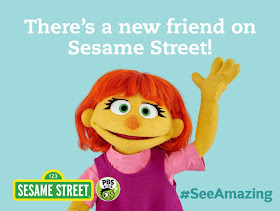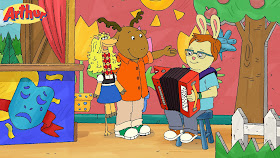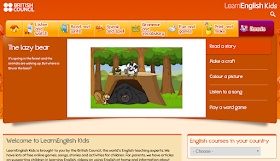As we continue to support Autism Awareness Month, I'm happy to publish this exceptional article by Suzanne Mahoney, a Spanish-American mother of two in a multilingual household. She's homeschooling her special needs child and shares helpful advice and resources for parents who are considering homeschooling as an option for their own family.
Lion’s Story: To Homeschool a Special Needs Child
Homeschooling a special needs child can be challenging, but it is rewarding not only for your child’s accomplishments but your own. In Lion’s case, we have seen both sides of the education fence; public school and now for the last year, homeschool. Lion, now 15 years old, has a variety of obstacles to overcome. Some of his diagnoses include cerebral palsy and autism. He is also non-verbal and (until a couple of months ago) a non-walker. Homeschooling challenges can be especially complicated when there are multiple spoken languages in the home. Since birth, Lion had been immersed in a household where three or four languages were being spoken continually. He grew up understanding three of them well. More recently, he has mainly been in a bilingual environment (English-Spanish) and because he was attending public school, his education was solely in English. Now that we are homeschooling, Spanish has been incorporated as part of his communications program.
When the homeschooling of a special needs child, in any language(s), is being considered, you must ask yourself, “Why do I want to do it?” It will be a lot of work, the time commitment may be huge, and not all expenses that you think are necessary will have external funding. But...
Homeschooling empowers both the child and the parent so that what you thought would be an impossible task, is made possible with patience, insistence, and persistence. The attained goals become your reward and your family’s quality of life also improves.
Choices and Sources
Once you have your “why” then what are your choices and sources? Visiting your state’s Department of Education website will be the place to start. It not only outlines the steps to take, but it should also have a wealth of supportive educational materials to guide and assist you. Most importantly, it should contain the legalese and statutes pertaining to Special Education and the available homeschooling programs within your state. This will better prepare you for knowing the what, when, where, why, and how of the homeschooling mission. I cannot stress how important it is to know your legal rights when it comes to children with disabilities, so though it is often time consuming to sit down: just do it. Understand it. It helps to invite a friend over for coffee to assist you in comprehending the lingo involved. Ask a community outreach program or find a local homeschool support group for feedback and ideas. The better informed you are, the better planning, services, and funding you will be able to obtain for your child. Yes! You can homeschool your child and get a few “perks.” It is a matter of knowing what is available in your area and what your child really needs. Check out
this page on HSLDA for information about Special Education Provisions in the 50 States and Territories.
To our surprise, our state offers flexibility in providing “perks” that I had not anticipated. For example, you can homeschool and still have the district provide speech, occupational, physical and behavior modification therapies. You can also have your child participate in the school’s extracurricular activities (such as sports, theater, band, etc.) and have transportation provided. The caveat? An
IEP (Individualized Education Program) and associated goals would then be required to be written by the IEP team.
Virtual School enrollment may be another alternative worth considering depending upon what your State offers.
Florida does require that homeschooling be logged, documented, and be available for review upon request.
For now, we wanted as much detachment and freedom as possible from school districts to allow Lion to catch-up in as many of his academics and life skills as possible. Well, we are proceeding with our own carefully crafted goals and we are experiencing fabulous results!
Considerations and Goals:
Each child is unique. His interaction with others is unique. His current school environment is also unique. So, you must create your goals and be realistic in doing so.
Years ago, I remember setting a goal for my child to learn to use his “AAC communications device (his voice)” to say “hello” independently. This seemed to be a logical, realistic, and very valuable skill; a first step towards communicating with us. This basic goal is successfully taught to special needs children similar to Lion.
At that time, he was attending public school. The frustration that we had was in working with the school to design appropriate goals that would benefit Lion. Unfortunately, the school told us that they knew our child better than we did and that we must follow their lead. They stated that they were the educators and we were not. We were overruled many times in the IEP meetings and elsewhere. It turned out that the school’s main driving force was not in benefiting Lion but in limiting the amount of time that they were willing to spend on him. They even stated that the time dedicated to his individualized academics was “15 to 20 minutes a day.” We were informed that there were “other students in the classroom to take care of.” Nor could we get a dedicated aide assigned to him within the IEP. Their methods were not well thought out, were not stressed at school, and were ineffective. For us to do something else at home was too confusing to Lion. We helped as we could but knew that the situation was not what it should be. As a result, Lion lost years. Such is life. But it was very frustrating!
At the same time, while attending school, Lion attained a simpler goal. He learned to feed himself. All I heard from school was that he either needed yet another adaptive spoon or that he had refused to feed himself and thus needed to be fed by someone at school. My solution? I took it upon myself to ignore the school’s methodology and applied my own methods during dinner time. My goal was to accomplish his training in six months. To my surprise, with hand-over-hand methods and a bit of insistence, in less than a month he was eating with minimal assistance. A month after that, he was independently feeding himself. He would still come home from school with the same notes of nonattainment and insist on being spoon fed by me because he had been spoon fed at school. He really had them fooled and they did not take the time needed to listen to me, so they could understand, insist, and change Lion’s behavior. It took us an hour to dine then. But today, he can eat as quickly or as slowly as need be. He has mastered the fork, too! I thought I would never see the day when I would finally sit and enjoy eating without having to feed him.
Be as Creative as You Want
Homeschooling for Lion is not the traditional paper, pencil, and book program. Just as technology has enabled “normal” homeschoolers to explore a vast wealth of global encyclopedic information, so has technology blessed our “special needs” children with the ability to access programs and communication platforms. This is especially evident for those children for whom talking and/or writing was not possible in the past due to physical or mental impediments. Now, many of these challenges have been alleviated by technical solutions that, while not perfect, are certainly helpful.
Lion’s first two years of homeschooling include three global goals:
1) Lion will communicate with minimal assistance using an AAC communication device (we use ProLoquo2go software) with family and friends,
2) Lion will walk independently (using a walker) on both even and some uneven surfaces (trails, the playground, etc.),
3) Lion will learn a variety of self-living skills; undressing and dressing with minimal assistance, toileting skills, transitioning in/out of a chair and the car from his walker or wheelchair, etc.
Just like any human being has good and bad days, so do our kids. The exception is that our children’s behavior tends to be more pronounced than children who don’t have special needs. When Lion wakes up with a cute half sneer in his mouth and the attitude of, “Oh, I’m broken and I can’t get up…” that’s when I know I need to forget what I had planned for that day and revisit what actually is possible to accomplish together. Math? Well, in our house, bread needs to be made. So, counting while measuring ingredients and integrating this activity into the use of his communication device may be the only types of things that can be accomplished… that day.
When his attitude is good, he does much more and it thrills me that he enjoys most of it. Quite a change from his public school days.
We have found that teaching methodologies and best practices may be obtained and learned from surmountable sources of data. Usually, they are available at our fingertips via the internet or a visit/phone call and thus our only limitation is the time it takes to find, question, read, understand, and then apply them. But not everything works for your child.
Homeschool Accomplishments
Remember Lions’ three global goals that I mentioned? It is almost time to write new goals - over a year early! Half a year into his schooling, Lion has almost completed goals #2 and #3 and has made great progress with goal #1. It is amazing to see Lion spontaneously communicate with us and voice new words in new ways. Lion is beginning to break the “autistic ice!” Sometimes he is so happy with his new skills that he breaks down in a fit of giggles!
Additional Resources
I've also found very useful resources available on the following websites:
Looking Forward
There’s a lifetime for learning. Don’t rush. Do it right. The old adage that you must sometimes slow down to speed up is, oh, so true!
----
Suzanne Mahoney is a homeschooling a Spanish-American mother of two. She's also a Board Member of Family Network on Disabilities (FND), Board Member of the Family Network for Special Needs Fund Trust (FNSNTA) and past Board Member of the Florida Interagency Coordinating Council for Infants and Toddlers (FICCIT)
Did you enjoy this article? Are you thinking about homeschooling your child? Let me help! My book - The Latino Family's Guide to Homeschooling - covers everything you see here and more.





































